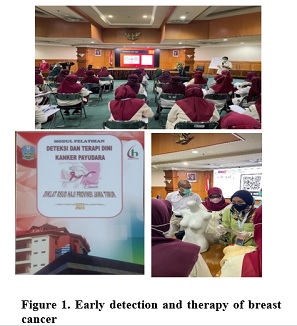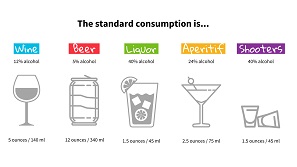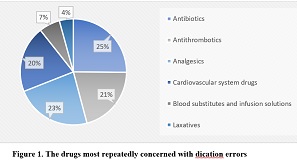Socioeconomic Profile of Lymphadenitis Tuberculosis Patients in The Outpatient Department of dr. Soetomo Hospital, Surabaya, Indonesia

Tuberculosis (TB) remains one of the most lethal infectious diseases worldwide, with a rising incidence of lymphadenitis TB, the most common form of extrapulmonary TB (EPTB) in recent years. Lymphadenitis TB can be transmitted through primary infection via the oropharyngeal mucosa, and various socioeconomic factors may influence the risk of infection. Understanding the socioeconomic profile and risk factors associated with lymphadenitis TB is crucial for effective control and prevention strategies. This descriptive cross-sectional study aims to investigate the socioeconomic profile of lymphadenitis TB patients and analyze potential risk factors. Sampling was conducted using a total sampling method, including medical records and interviews via Google Forms or WhatsApp. The sample comprised all lymphadenitis TB outpatients at the General Hospital dr. Soetomo, Surabaya, from January to December 2022, resulting in 180 eligible patients, 103 of whom agreed to the interview. Among the 180 patients, the majority were female (56%), aged 11-20 years (24%), and high school graduates (41%). Among 103 interview participants, most had a monthly income below the minimum wage (55%). Most respondents preferred to cook their meals (62%), with a significant proportion having an income below the average salary (62%). Most respondents (76%) showed good awareness of lymphadenitis TB signs, but nonspecific and mild symptoms led to delayed treatment-seeking in 39% of patients. These findings suggest a potential association between various socioeconomic profiles and lymphadenitis TB infection, although further research is needed to strengthen this association.
INTRODUCTION
Tuberculosis (TB) is an infectious disease caused by Mycobacterium tuberculosis. TB infection itself can be classified into several spectrums, such as: uninfected individual, TB infection, incipient TB, subclinical TB without signs/symptoms, subclinical TB with unrecognised signs/symptoms, and TB disease with signs/symptoms1,212. Currently, Tuberculosis is the second-deadliest infectious disease in the world, second only to Covid-19. It is estimated that around 10.6 million people fell ill with TB in 2021, with 1.6 million estimated deaths from TB. Indonesia ranks as the second highest country in terms of TB cases, accounting for 9.2% of the global TB cases33. In the province of East Java, 42.193 new TB cases were reported in 2019, making it the third highest among all provinces in Indonesia. However, this number is still below the estimated cases by the Ministry of Health of the Republic of Indonesia, which predicted that 2021, there would be 95,925 TB cases in East Java44. Therefore, it is estimated that 56% of TB cases remain undetected. This highlights the importance of increasing TB diagnosis rates so that the progress in TB eradication can be accelerated again and aligned with the WHO targets.
Tuberculosis can affect various organs in the body. Based on the organs involved, TB can be classified into pulmonary TB and extrapulmonary TB (EPTB). EPTB affects explicitly organs outside the lungs, such as the lymph nodes, pleura, bones, joints, central nervous system, larynx, and kidneys5,656. Although pulmonary TB still accounts for the majority of TB cases, there has been a relative increase in EPTB cases in recent years77. World Health Organisation (WHO) data shows that EPTB comprised 16% of the 7.1 million TB cases worldwide in 2019. Approximately 10-19% of TB cases in Indonesia are estimated to be EPTB88. Among all cases of extrapulmonary TB (EPTB), lymphadenitis TB and Pleural TB are the most common types, with cervical tuberculous lymphadenitis (CTL) as the most common type of lymphadenitis TB7,979.
The pathogenesis of lymphadenitis TB, especially in CTL, is still not fully understood, and ongoing debates exist on this matter. Generally, the pathogenesis of CTL can be divided into two theories. The first theory suggests that lumphadenitis TB is a complication of pulmonary TB that occurs due to the ingestion of tubercle bacilli by macrophages in the alveoli. These macrophages are transported to the lymph nodes via the lymphatic drainage system. On the other hand, the second theory involves direct infection through the oropharyngeal mucosa, tonsils, or adenoids. The pathogen directly enters the cervical lymph nodes without passing through the lung parenchyma. This theory can also explain the pathogenesis of CTL in patients without pulmonary TB99.
Several risk factors for the spread of lymphadenitis TB include sex, low socioeconomic status, and a history of HIV infection1010. Low socioeconomic status is often associated with unhealthy living environments and poor food hygiene, which can also serve as risk factors for the direct transmission of extrapulmonary TB through the oropharyngeal mucosa. History of contact with TB-infected patients can also be a risk factor for TB spread1111. This study aims to examine the socioeconomic profile of lymphadenitis TB patients, assess its distribution, and analyze the potential relationship between socioeconomic conditions and the risk of lymphadenitis TB infection. The outpatient department of Dr. Soetomo Hospital Surabaya was chosen as the location for the research because Dr. Soetomo Hospital Surabaya is the main referral hospital in the eastern part of Indonesia, in the hope of getting as much data as possible.
MATERIALS AND METHODS
This study utilized a descriptive method involving data collection from medical records and interviews of all lymphadenitis TB patients in the Outpatient Installation (IRJ) of Dr. Soetomo General Hospital, Surabaya, between January and December 2022. Ethical clearance was obtained from the Ethics Committee of Health Research (KEPK) dr. Soetomo General Hospital, Surabaya, Indonesia, with reference number 0538/KEPK/ XII/2022 on December 19, 2022. Three hundred eighty medical records were obtained from the Technology, Communication, and Information Installation (ITKI), providing general demographic information such as age, sex, and education. Additionally, phone numbers of patients or relatives were collected to facilitate further interviews conducted via WhatsApp.
A data cleaning was then conducted to filter duplicate data from the same patient and remove incomplete data, including patients without contact information, leaving 180 unique patients with complete medical records. Subsequently, all 180 patients were contacted via WhatsApp to inquire about their willingness to participate in the interviews. The parents or relatives were contacted for underage patients to ask about their desires. Among the contacted patients, 103 agreed to participate, and interviews were conducted using phone calls, WhatsApp messages, or Google Forms. The interview consisted of 12 questions related to socioeconomic profile. All interview data were subsequently categorised into groups based on study variables using Microsoft Excel to create a frequency distribution table.
RESULTS
This study collected data on age, sex, and completion from 180 medical records. Additionally, data on monthly income (above or below the regional minimum wage), awareness of neck lymph node enlargement, time interval from recognition of neck lymph node enlargement to the first medical examination, and eating habits were collected through interviews with 103 patients or their relatives who agreed to be interviewed. To address potential bias from a large number of
Migliori GB, Ong CWM, Petrone L, et al. The definition of tuberculosis infection based on the spectrum of tuberculosis disease. Breathe; 17. Epub ahead of print 1 September 2021. DOI: 10.1183/20734735.0079-2021.
Frascella B, Richards AS, Sossen B, et al. Subclinical Tuberculosis Disease-A Review and Analysis of Prevalence Surveys to Inform Definitions, Burden, Associations, and Screening Methodology. In: Clinical Infectious Diseases. Oxford University Press, 2021, pp. E830–E841. DOI: 10.1093/cid/ciaa1402
World Health Organization. Global Tuberculosis Report 2022, https://www.who.int/publications/i/item/9789240061729 (2022, accessed 20 June 2023).
Indonesia Health Profile. 2021. (2022, accessed 21 June 2023). https://kemkes.go.id/app_asset/file_content_download/Profil-Kesehatan-Indonesia-2021.pdf
Centers for Disease Control and Prevention. Core Curriculum on Tuberculosis: What the Clinician Should Know, https://www.cdc.gov/tb/education/corecurr/index.html (2021, accessed 21 June 2023).
Sharma SK, Mohan A, Kohli M. Extrapulmonary tuberculosis. Expert Review of Respiratory Medicine 2021; 15: 931–948. DOI: 10.1080/17476348.2021.1927718
Ketata W, Rekik WK, Ayadi H, et al. Les tuberculoses extrapulmonaires. Rev Pneumol Clin 2015; 71: 83–92. DOI: 10.1016/j.pneumo.2014.04.001
World Health Organization. Global tuberculosis report 2020. World Health Organization, https://www.who.int/publications/i/item/9789240013131 (2020, accessed 21 June 2023).
Deveci HS, Kule M, Kule ZA, et al. Diagnostic challenges in cervical tuberculous lymphadenitis: A review. North Clin Istanb 2016; 3: 150. DOI: 10.14744/nci.2016.20982
Gounden S, Perumal R, Magula NP. Extrapulmonary tuberculosis in the setting of HIV hyperendemicity at a tertiary hospital in Durban, South Africa. S Afr J Infect Dis 2018; 33: 57–64. https://hdl.handle.net/10520/EJC-12560049f7
Tandirogang N, Mappalotteng WU, Raharjo EN, et al. The spatial analysis of extrapulmonary tuberculosis spreading and its interactions with pulmonary tuberculosis in Samarinda, East Kalimantan, Indonesia. Infect Dis Rep; 12. Epub ahead of print 2020. DOI: 10.4081/idr.2020.8727.
Marliana Nurprilinda, Fajar Lamhot Gultom, Kurniyanto, et al. Overview of pulmonary tuberculosis and extra pulmonary tuberculosis at the Siloam MRCCC Semanggi cancer hospital in 2018-2020. World Journal of Biology Pharmacy and Health Sciences 2023; 13: 065–077. DOI : 10.30574/wjbphs.2023.13.1.0265
Djannah F, Massi MN, Hatta M, et al. Profile and histopathology features of top three cases of Extra Pulmonary Tuberculosis (EPTB) in West Nusa Tenggara: a retrospective cross-sectional study. Annals of Medicine and Surgery 2022; 75: 103318. DOI: 10.1016/j.amsu.2022.103318
Sunnetcioglu A, Sunnetcioglu M, Binici I, et al. Comparative analysis of pulmonary and extrapulmonary tuberculosis of 411 cases. Ann Clin Microbiol Antimicrob 2015; 14: 1–5. DOI: 10.1186/s12941-015-0092-2
Mekonnen D, Derbie A, Abeje A, et al. Epidemiology of tuberculous lymphadenitis in Africa: A systematic review and meta-analysis. PLoS One 2019; 14: e0215647. DOI: 10.1371/journal.pone.0215647
Cataño JC, Robledo J. Tuberculous lymphadenitis and parotitis. Tuberculosis and Nontuberculous Mycobacterial Infections 2017; 343–354. DOI: 10.1128/9781555819866.ch21
Dhestina W, Santoso P, Sahiratmadja E. Proportion of Extrapulmonary MDR-TB Confirmed by GeneXpert® in Dr. Hasan Sadikin General Hospital, https://e-journal.unair.ac.id/IJTID/ (2022). DOI : 10.20473/ijtid.v10i2.33768
Arnedo-Pena A, Romeu-Garcia MA, Meseguer-Ferrer N, et al. Pulmonary
Versus Extrapulmonary Tuberculosis Associated Factors: A Case-Case Study. Microbiol Insights 2019; 12: 117863611984036. DOI: 10.1177/1178636119840362
Mathiasen VD, Hansen AK, Eiset AH, et al. Delays in the Diagnosis and Treatment of Tuberculous Lymphadenitis in Low-Incidence Countries: A Systematic Review. Respiration 2019; 97: 576–584. DOI: 10.1159/000499052
Muslimah DDL. Physical Environmental Factors and Its Association with the Existence of Mycobacterium Tuberculosis: A Study in The Working Region of Perak Timur Public Health Center. Jurnal kesehatan lingkungan 2019; 11: 26–34. DOI : 10.20473/jkl.v11i1.2019.26-34
Copyright (c) 2025 Arsya, Sahudi, Linda Dewanti

This work is licensed under a Creative Commons Attribution-ShareAlike 4.0 International License.
- The journal allows the author to hold the copyright of the article without restrictions.
- The journal allows the author(s) to retain publishing rights without restrictions.
- The legal formal aspect of journal publication accessibility refers to Creative Commons Attribution Share-Alike (CC BY-SA).
- The Creative Commons Attribution Share-Alike (CC BY-SA) license allows re-distribution and re-use of a licensed work on the conditions that the creator is appropriately credited and that any derivative work is made available under "the same, similar or a compatible license”. Other than the conditions mentioned above, the editorial board is not responsible for copyright violation.































